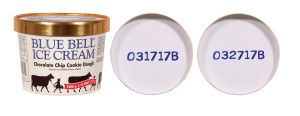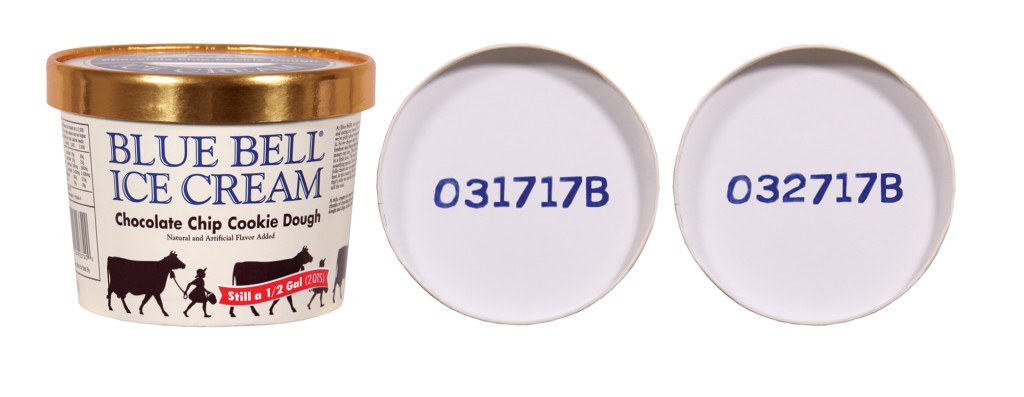The ice cream industry’s widening listeria scare, which has prompted at least five companies to recall products, is fueled in part by DNA testing and other new tools that can better detect the bacteria and trace its origins.
Advances in genome sequencing, also called biological fingerprinting, allowed health officials to tie illnesses from as far back as 2010 to listeria in ice cream from Blue Bell Creameries Inc. At least 10 people have been sickened by the tainted products, with three dying after eating ice cream served by a Kansas hospital earlier this year.
Listeria concerns mounted on Thursday when Jeni’s Splendid Ice Creams recalled its full product line, saying a test in Nebraska turned up positive for listeria. Three other companies — Full Tilt, Snoqualmie Gourmet Ice Cream and Pink’s — also have yanked products in the past four months after detecting the bacteria. Now the rest of the industry is reviewing procedures to ensure there isn’t another outbreak.
“The entire ice cream industry is on notice,” said Rob Tauxe, a foodborne disease expert at the Centers for Disease Control and Prevention. “What I would hope is companies are taking a close look at their products to identify any problems as soon as possible.”
While ice cream is now closely linked with listeria in consumers’ minds, that didn’t used to be the case. Before testing technology improved, the product wasn’t seen as especially prone to listeria contamination. Food poisoning cases often weren’t linked back to specific products because they couldn’t be tested as precisely.
Hospital Deaths
The situation changed after investigators began reviewing the three deaths at a Kansas hospital, Via Christi Health in Wichita. They used genome sequencing — a tool that’s only recently been available to them — to link Blue Bell’s ice cream to those victims, as well as seven other people who were sickened over the past five years.

“The benefit is: We find more clusters of possibly related cases, we’re able to solve more of them and link them up with specific foods,” Tauxe said. “And we’re finding things that haven’t been implicated before, like ice cream.”
DNA sequencing used to take months, even years, and was “fabulously expensive,” he said.
Now investigators can decode a string of DNA in hours for just $100.
“These technologies are letting us connect dots that were once completely opaque,” said David Acheson, a former Food and Drug Administration official who now runs a food-safety consulting business. “That was the trigger in the Blue Bell case.”
Likes the Cold
Listeria mainly affects older people, pregnant women, newborns or adults with weakened immune systems, according to the CDC. Symptoms include fever and muscle aches, sometimes preceded by diarrhea or other gastrointestinal symptoms. Infection can lead to miscarriage or stillbirth in pregnant women, the CDC says.
E. coli, another bacteria that causes food poisoning, can be kept at bay by washing hands and cleaning utensils with hot, soapy water. But listeria works differently. Unlike many other bacteria, it grows in cold temperatures and can only be killed by cooking or pasteurizing. Some of the most at-risk foods include deli meats, raw milk and other dairy products, soft cheese, and sprouts. Blue Bell said listeria got into its products after the pasteurization phase was over.
“Ice cream makers are double and triple checking safety protocols to make sure you can shop with confidence when buying ice cream,” John Allan, vice president of the International Dairy Foods Association, said in a statement.
‘Top of Mind’
Baskin-Robbins began reviewing its procedures when news of the Blue Bell outbreak hit earlier this year. The company, a unit of Dunkin’ Brands Group Inc. with more than 2,400 ice cream shops across the U.S., also urged suppliers to keep listeria concerns “top of mind.”
Baskin-Robbins plans to revisit its procedures again this week “to see if we can find any additional areas of improvement to maintain the integrity of our food safety protocol,” according to a statement.
Nestle SA, the top seller of ice cream in the U.S., said it “meets or exceeds all FDA requirements in sourcing and manufacturing our products.” The company supplies a wide range of brands, including Haagen-Dazs, Dreyer’s and Edy’s.
Unilever, the seller of Ben & Jerry’s and Klondike, said it has “robust quality and safety protocols across our ice cream network designed to prevent listeria contamination.”
“None of the products affected by listeria, which is the focus of the FDA’s current investigation, are Unilever products,” the company said.
Swab Tests
Blue Bell ranks third in U.S. ice cream sales, according to Euromonitor International. The company pulled all its products last week, expanding on earlier recalls, in a move affecting 8 million gallons of ice cream and other products. It took the step after listeria turned up in multiple parts of its operations. It’s now sanitizing equipment and said it would expand the number of times it swabs and tests its plants by 800 percent.
Blue Bell is still trying to figure out how listeria got into its products. As part of the investigation, the company has been producing small batches of ice cream at three of its four factories for testing by heath officials, according to Joe Robertson, a spokesman for the Brenham, Texas-based company. Blue Bell doesn’t have a timetable for when it will start selling ice cream again.
Rough Patch
The recall has put the closely held company in a tough spot. Unlike the industry’s largest competitors – food giants Unilever and Nestle – it only makes ice cream. So there’s no other product to fall back on. But the company’s not thinking about its financial situation, Robertson said.
“That’s not where our minds are right now,” he said. “We have to make sure everything is right before we start selling again.”
Jeni’s, a Columbus, Ohio-based company that touts its fair- trade ingredients and milk from grass-fed cows, pulled all of its products after the Nebraska Department of Agriculture detected listeria in a random sample. Jeni’s said it wasn’t aware of any illnesses from the now-recalled products. In the case of Snoqualmie Gourmet Ice Cream, a company in Washington state, its ice cream was linked to two illnesses.
The FDA didn’t respond to requests asking whether they would direct companies to check products more stringently. The CDC only tests bacteria isolated from sick people.
The good news is the lessons of listeria may be applied to other sources of food poisoning, Tauxe said. The CDC wants to expand the use of whole genome sequencing to E. coli and salmonella, he said.
“We anticipate within the next year or two being able to share these methods with state health departments and build out a national network for doing this DNA sequencing,” he said.
Was this article valuable?
Here are more articles you may enjoy.


 Asahi Sales Drop Worsens as Cyber Hack Disruption Lingers
Asahi Sales Drop Worsens as Cyber Hack Disruption Lingers  Zillow Deleting Climate Risk Scores Reveals Limits of Flood, Fire Data
Zillow Deleting Climate Risk Scores Reveals Limits of Flood, Fire Data  Toyota Unveils Concept LFA Supercar, and It’s Fully Electric
Toyota Unveils Concept LFA Supercar, and It’s Fully Electric  OpenAI And Microsoft Sued Over Murder-Suicide Blamed on ChatGPT
OpenAI And Microsoft Sued Over Murder-Suicide Blamed on ChatGPT 